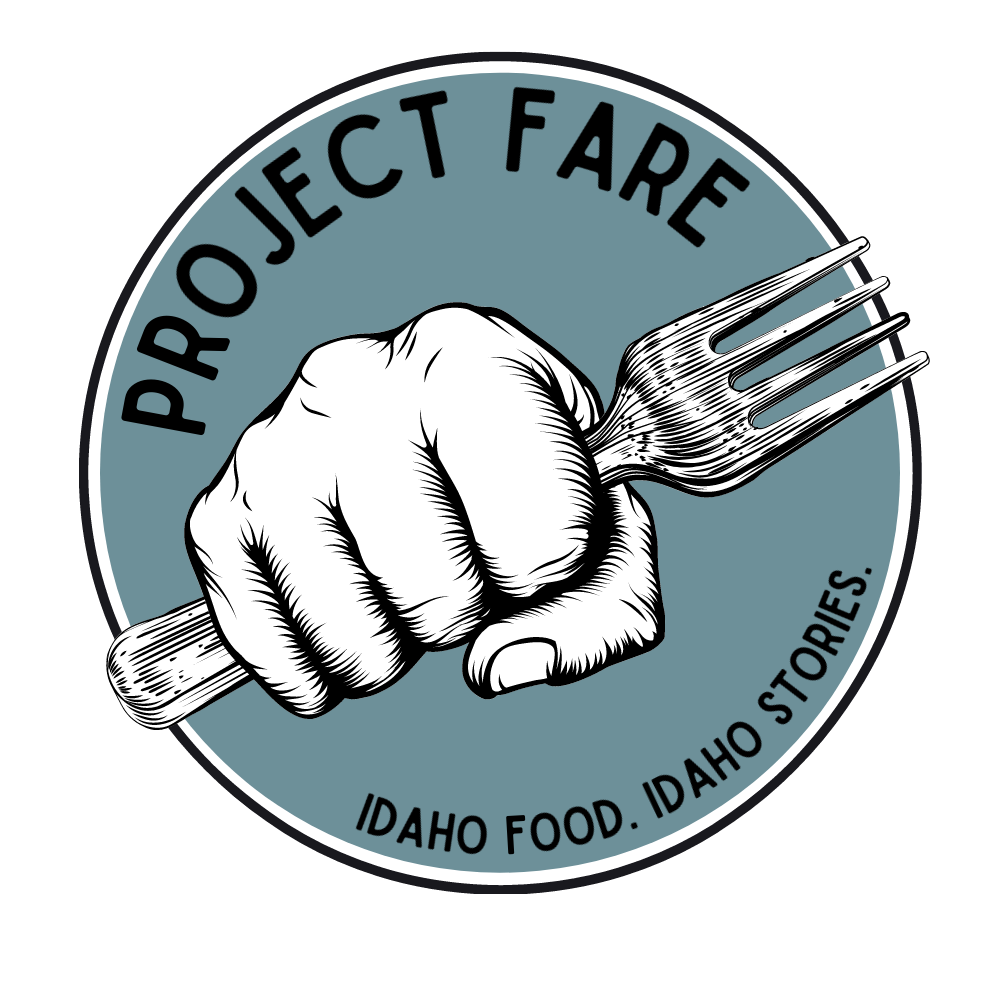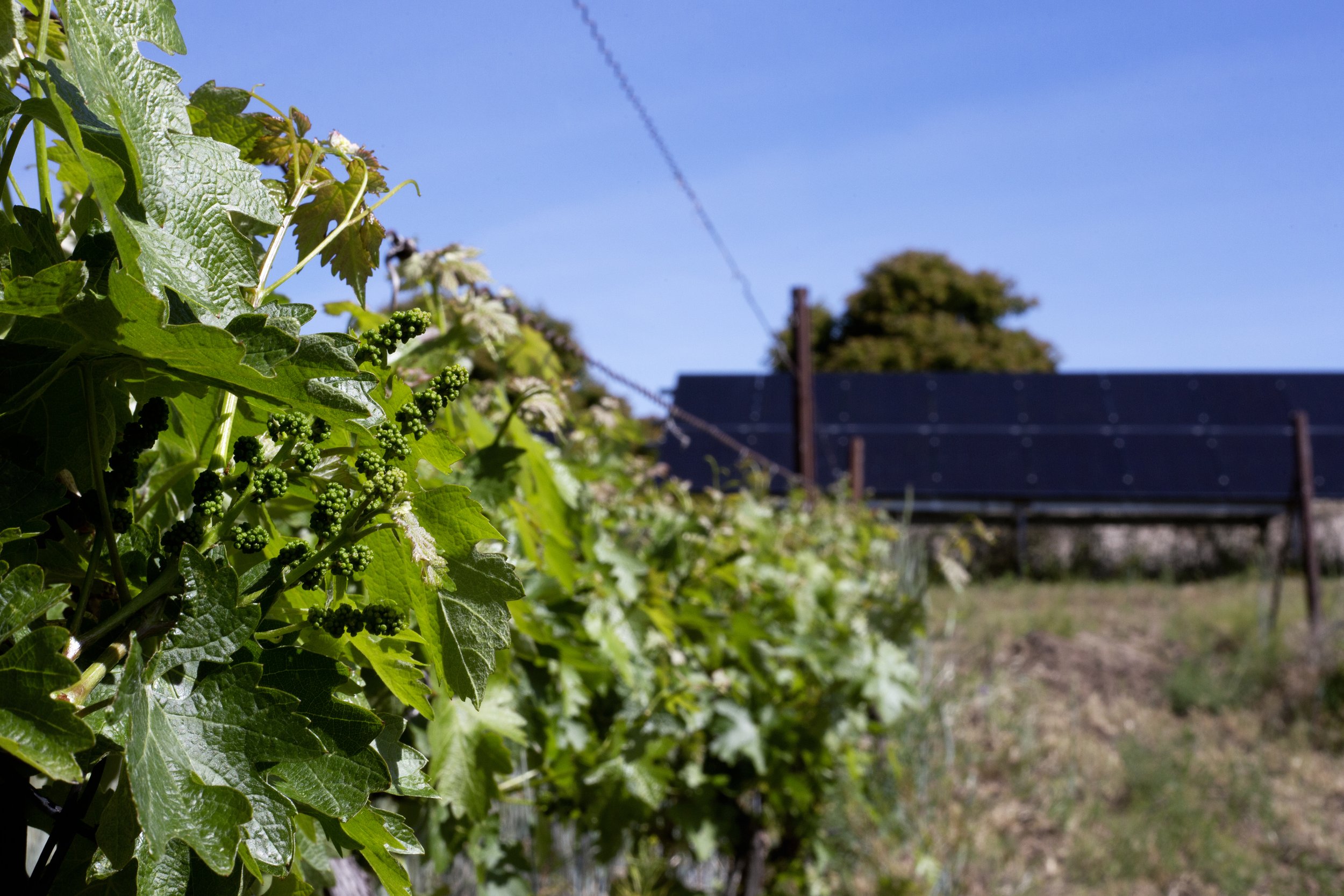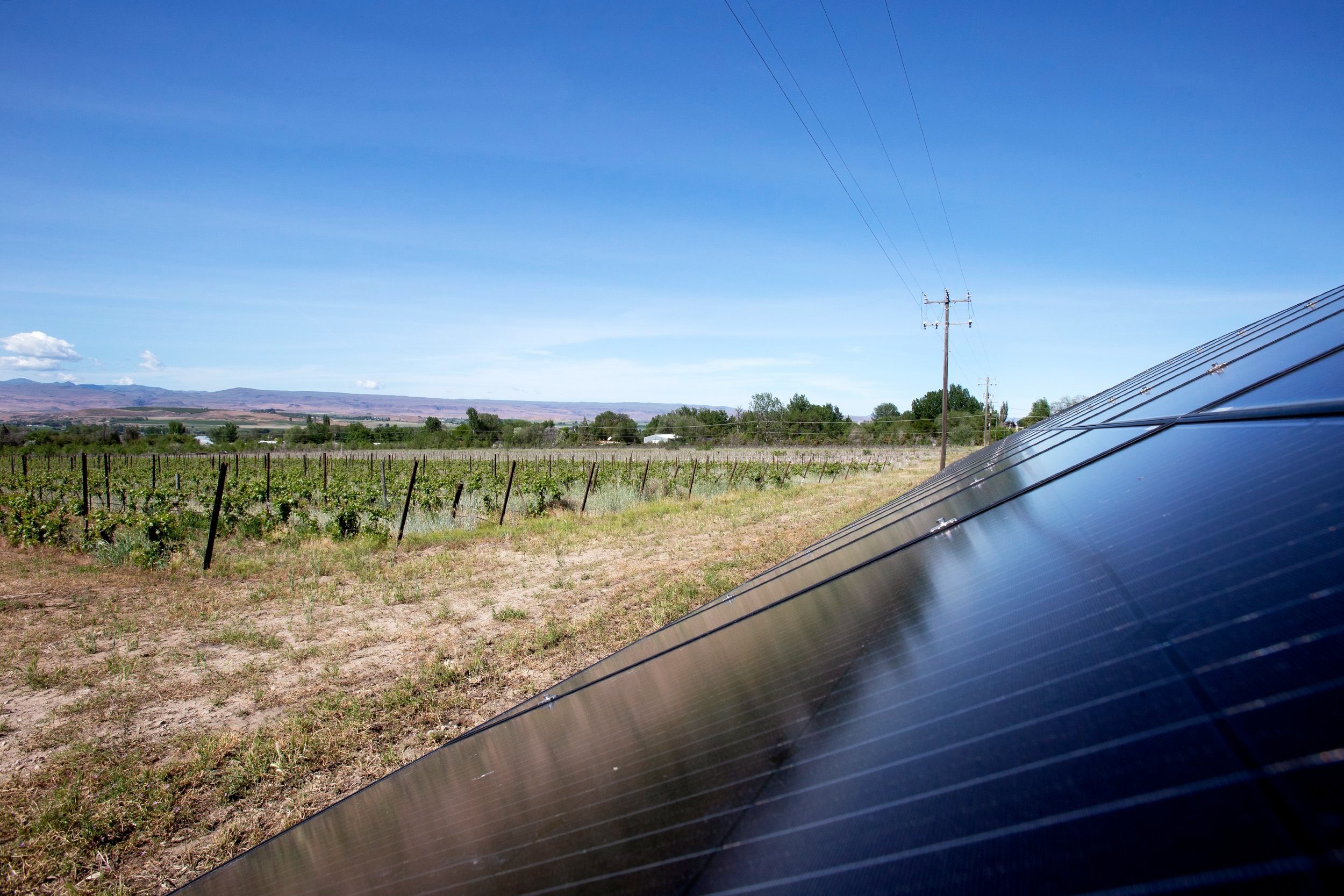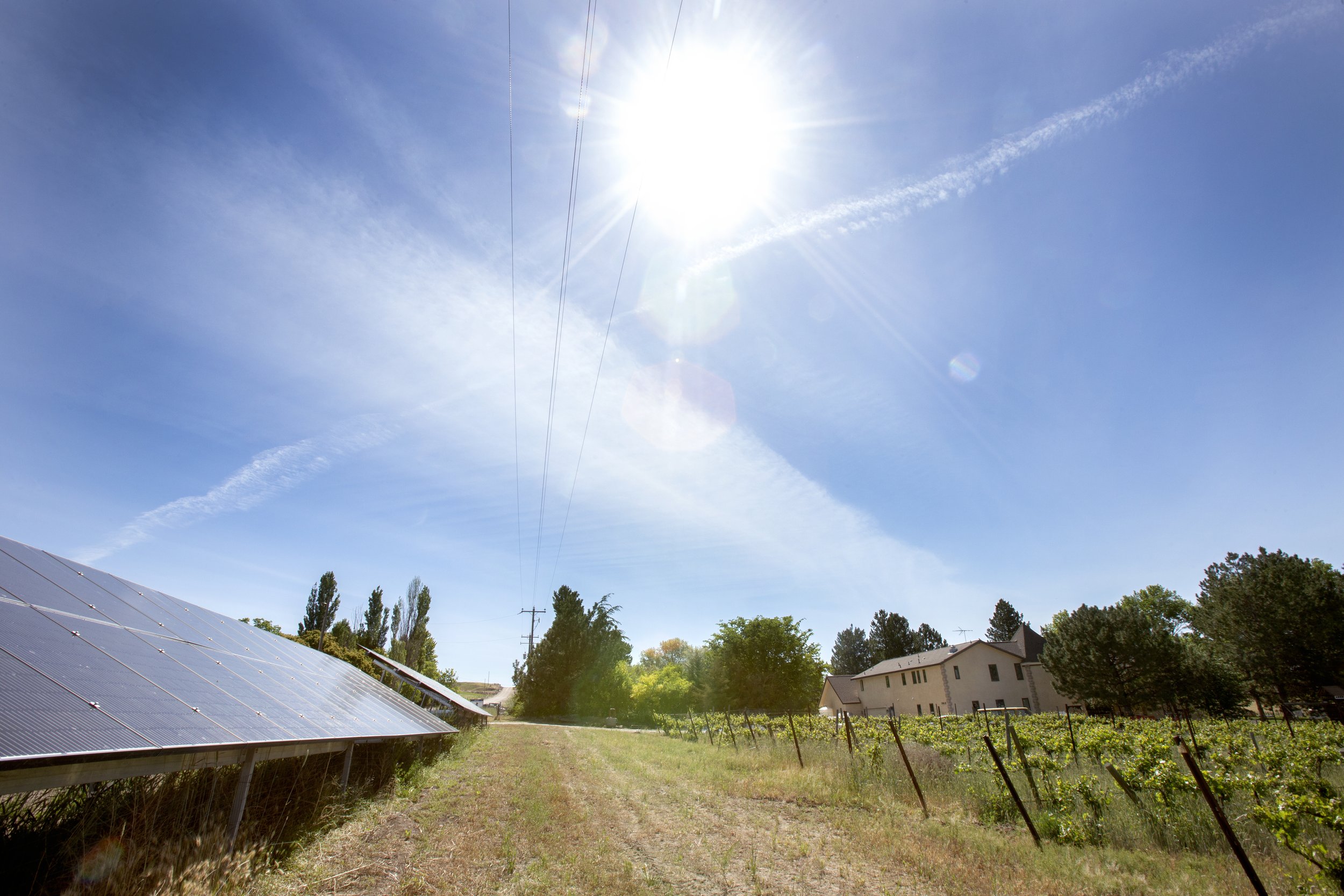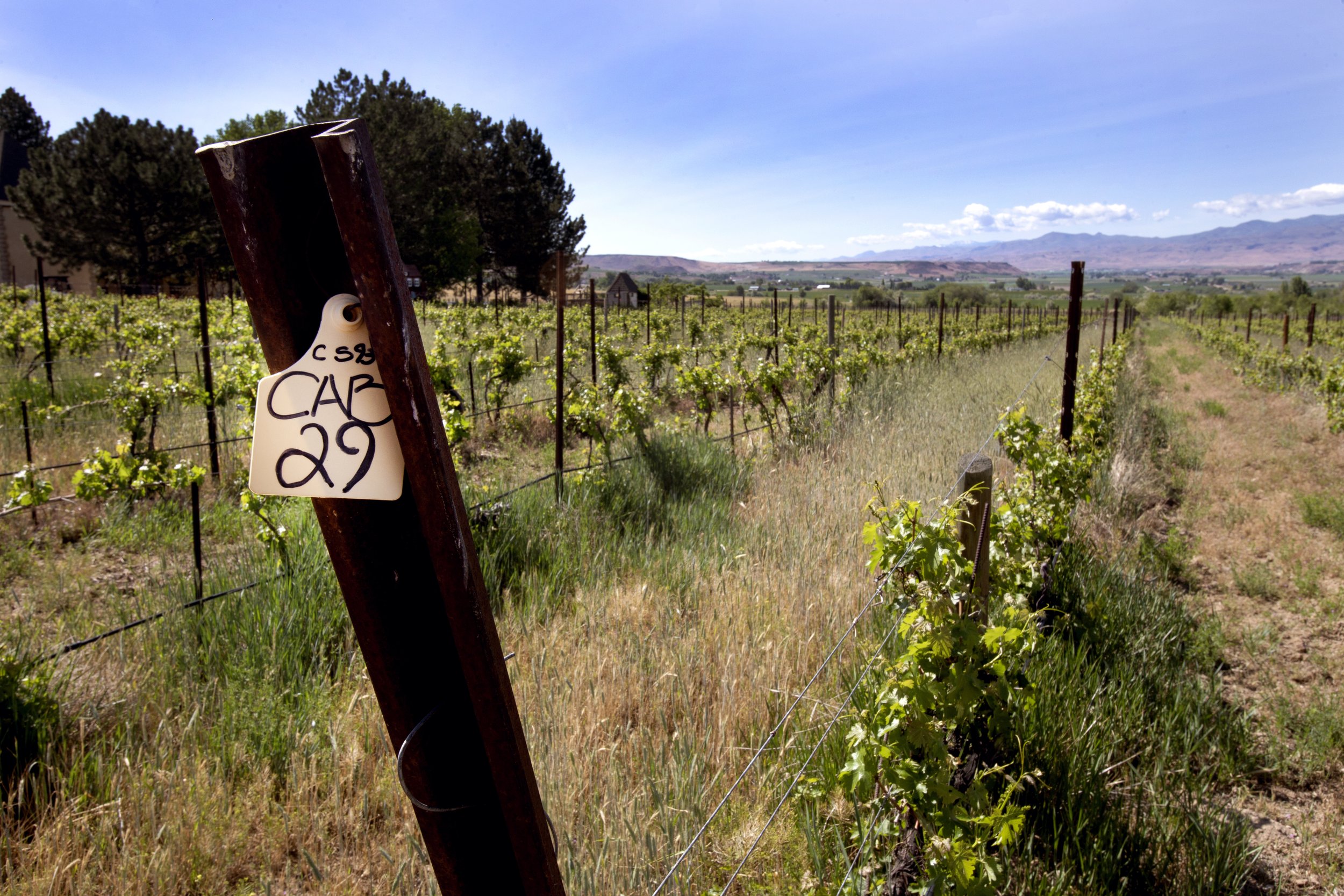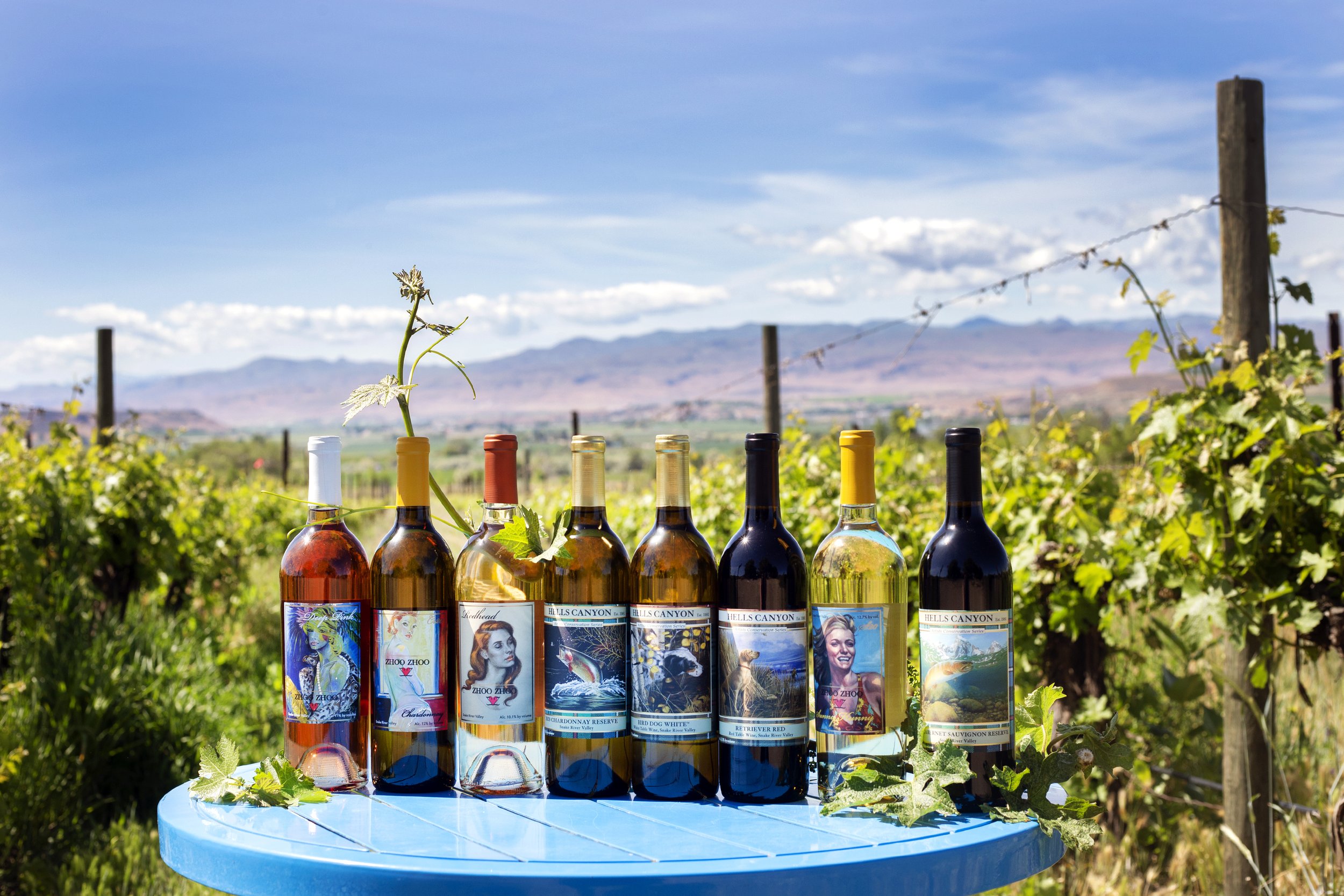The Idaho beverage industry: Behind the solar power curve?
Story by Lex Nelson
Solar panels behind grape vines at Hells Canyon and Zhoo Zhoo winery | Photo by Leslie Rodriguez
On a sultry day in early June, the front lawn of the Hells Canyon and Zhoo Zhoo winery feels like a tiny slice of Tuscany transported to Caldwell, Idaho. Soft music plays, sunlight falls gracefully through tree canopies, and the twisting length of the Snake River is visible far beyond the grapevines. It’s deeply serene. But the winery has an open secret: Both the wine and ambiance are made possible by solar power.
According to Hadley Robertson, a second-generation winemaker at Hells Canyon and Zhoo Zhoo, guests often miss the array of 64 black solar panels on Symms Road beside the tasting room’s driveway. The panels have produced 80% of the winery’s power since their installation by RevoluSun in 2018.
“The solar power powers all of our operations: the irrigation pump, winery facility and production pad, the residence on site and the winery tasting a room on site,” she says.
Hells Canyon isn’t alone among Idaho beverage producers. In the summer of 2021, downtown Boise’s Lost Grove Brewing installed 12 solar panels on the roof of its patio bar made from a repurposed shipping container. The panels produce enough energy to fully power the brewery’s outdoor bar cooler and live music stage. Any excess is stored in solar batteries provided by Joule Case.
Hells Canyon and Lost Grove are part of a tiny slice of Idaho’s beer and wine scene powered by the sun. Despite the fact that the U.S. department of energy claims “solar power is more affordable, accessible and prevalent in the U.S. than ever before,” neither Robertson nor Lost Grove Brewing founder/owner Jake Black could name another Idaho beverage producer using it.
Solar in the mountain west
Idaho ranks sixth out of the eight Mountain West states in total megawatts of installed solar capacity according to the Solar Energy Industries Association. The Gem State had installed 608 megawatts as of Q1 2022, compared to states ranging from 125 megawatts (Montana) to 5,743 (Arizona). Idaho Power communications specialist Jordan Rodriguez said the option for people and businesses to first generate solar power, then return it to the grid through a process called net metering is still “relatively new” in the Gem State.
“There have only been customers doing this for about 20 years,” he explained.
Idaho celebrated its one thousandth net metering customer in 2016. Today, Rodriguez said, Idaho Power has “customers across virtually all of our different customer classes who are participating in clean energy offerings or customer generation.” The majority of those are residential customers.
Businesses like Hells Canyon and Lost Grove are rarer, following in the footsteps of beverage producers like Snake River Brewing in Jackson, Wyoming, which powers its canning line with solar. Seven other Mountain West breweries made Solarplaza’s worldwide list of the “Top 100 Solar-Powered Beer Breweries.” In California, solar powered wineries are so common that they’ve spawned SolarCraft, a self-proclaimed specialist in “preferred provider of solar photovoltaic electric systems for Napa and Sonoma wineries, farms and vineyards.”
Green grape vines at Hells Canyon and Zhoo Zhoo winery, Caldwell, Idaho | Photo by Leslie Rodriguez
The cost (and politics) of going solar
Black and Robertson pointed to several hurdles that could be holding other Idaho beverage businesses back. The first major obstacle is cost. The price of standard electricity service in Idaho is well below the national average; Idaho power doesn’t offer financial incentives for switching to solar; and arrays like the setup at Hells Canyon don’t come cheap. Robertson and her team took out a $50,000 loan from the United States Department of Agriculture to cover their $50,000 bill. It will take an estimated seven years for them to recoup that cost.
Lost Grove’s panels are “off the grid” so Black didn’t partner with Idaho Power. The brewery’s setup cost $12,000 and $5,000 of that was financed through Joule Case. Black said going solar was slightly more expensive than running power to Lost Grove’s outdoor bar cooler and stage. However, he was more concerned with a second hurdle: the fact that as a renter, if his solar setup wasn’t portable, he could risk losing his investment.
“We don't currently own our building, so investing more into the property when we could invest in something we could take with us (is what led us to) now having a shipping container with solar on it,” he said.
Third, companies installing large-scale solar projects may have to sacrifice land that could be used for vines, equipment, etc. Robertson estimates the panels at Hells Canyon and Zhoo Zhoo take up an eighth to a quarter of an acre.
Finally, there’s the complexity of Idaho Power’s net metering process. Wineries and breweries that make more kilowatt hours of power than they can use or store return their “excess energy credits” to the grid in exchange for “bill credits” toward future Idaho Power expenses. Right now, the conversion of energy credits to bill credits is 1:1. However, Idaho’s rules around net metering aren’t set in stone. Businesses that install solar are at the mercy of the Idaho Public Utilities Commission (IPUC), which decides on proposed changes to net metering.
“Essentially the utilities can’t just set their prices, that has to be done at the discretion of the commission,” Rodriguez explained.
An uncertain future
In 2019, the IPUC ruled Idaho’s current net metering system should remain in place. However, as we write this the commission is considering changes to the net metering rules that could lower the value of excess energy credits. Businesses that were generating solar power on or before December 20, 2019, would be “grandfathered in” with the 1:1 ratio in most circumstances. But the constant risk of change — and the fact that Idaho power supports a lower valuation, arguing the current ratio passes the cost of things like infrastructure and staffing to its non-net metering customers — is an important piece of the solar puzzle for businesses considering solar power.
“Hopefully it will continue to improve and more people will go solar, but I feel like Idaho Power, they haven't had a good program to incentivize customers and they don’t love solar because it doesn't pay them,” Robertson said.
Despite the uncertain future, Idaho wineries and breweries are making moves in the solar space. Sip Magazine reported Caldwell’s Sawtooth Winery partnered with Eco-Caps in 2021 to offer a “glamping” experience including tents with solar-powered lighting with solar showers. Robertson plans to add batteries so her winery can store energy with less reliance on the grid, and Black dreams of covering Lost Grove’s roof in panels. Both hope increased federal solar incentives are on the way.
In the meantime, solar advocates can take solace in the fact that every brewery and winery fueled by Idaho Power is using a little bit of solar. Solar power makes up 4.1% of the utility’s energy mix, ferrying a little bit of the sun to each customer on the grid.
